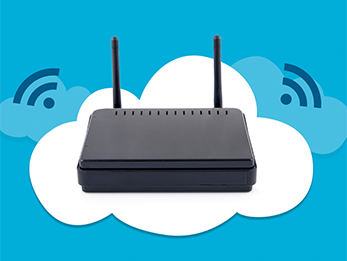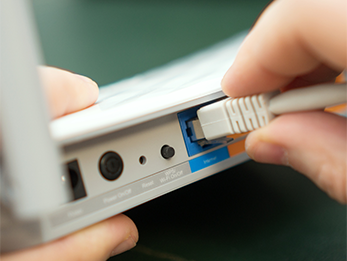#SIMcardinternetrouter
Explore tagged Tumblr posts
Text
How SD-WAN will advance in 2023
The coronavirus pandemic brought many changes, some of them rather drastic. One of these changes was how the organization worked before, during, and after the pandemic. Work from home became the new normal between the pre-pandemic and post-pandemic eras. However, with the advent of working from home, particularly during the pandemic, several changes were witnessed, especially in the in-office IT infrastructure plans. With more and more people working from home and the need for a secured network becoming the order of the day, cloud-based networking architecture has become the top choice of organizations worldwide.
The traditional network technology could not handle the amount of data the pandemic days thrust upon them. This opened the door for various developments in the networking field; one of those was Software Defined Wide Area Networks or SD-WAN. In SD-WAN, data, connectivity, and traffic between the branches and the headquarters are managed by the cloud environment. These hubs are the “edge” and are crucial for cloud security.
The issues with conventional networking technology were eliminated with SD-WAN. It helped boost the network speed, minimize downtime, improve efficiency, and cut costs, amongst several other advantages. And now, despite the pandemic slowing and people returning to offices, SD-WAN is here to stay. This is because it has helped the offices to work with better efficiency and security.



SD-WAN is constantly evolving and is expected to do so in the new year. The top four trends in the genre of SD-WAN expected to make significant inroads in the coming year are as follows:
1. Secured Remote Access Security of the network is one of the most significant advantages of SD-WAN. As the employees from the branch offices and remote work setup logged in from different geographical locations, it resulted in serious security issues. SD-WAN helps resolve security concerns. With this architecture, employees could install SD-WAN endpoints in their homes. With SD-WAN, it has become possible for employees to log in to the company’s network with a high level of security, even during travel.
In the coming year, two trends in this particular genre are expected. These are:
An amalgamation of SD-WAN and remote access technology
Replacement of SD-WAN with secure remote access
2. SD-WAN As a Service Companies offering SD-WAN solutions highlight management, optimization, and redundancy capabilities in their package. Companies offering SD-WAN solutions are now pitching it as a service, meaning everything with regards to SD-WAN, right from installation to maintenance, is the service provider’s responsibility. With such a solution, businesses can narrow their attention to their core competencies because they have fewer SD-WAN-related concerns to examine and address.
3. Secure Access Service Edge Secure Access Service Edge is a combination of SDN and SD-WAN along with security features. SASE is an ultra-secure, high-on-performance, and highly adaptable network architecture. It is now anticipated that SD-WAN will eventually become a part of SASE. If a business uses SD-WAN as a service, it can quickly upgrade to SASE architecture down the road.
4. Artificial Intelligence in SD-WAN Artificial intelligence is making its presence felt in SD-WAN in significant ways. It is helping in:
Improving the choice of the traffic path
Providing improved policy definitions
Supplying automatic support for troubleshooting
Improved performance and security surveillance
In addition to many other advantages, any new trend in IT networking aids businesses in maximizing their efficiency. Since these kinds of changes herald either partial or complete overhauls in specific IT systems, any organization needs to consult its networking team before deciding on any modification. As an experiment, these kinds of solutions can be used in a sandbox setting, and the same applies to SD-WAN.
Companies using SD-WAN or planning to implement it should focus on the latest trends in the discipline. This will help to maximize the return on investment.
#MultiWanRouter#SDWANRouter#4glterouterwithsimcardslot#simbasedwifirouter#5glterouterwithsimcardslot#SIMcardinternetrouter#sdwansolutions#networkrouters#remoteconnectivity#loadbalancingrouter#4gsimrouter#simwifirouter#4glterouter#new year#january 2023
0 notes
Text
MULTIPLE ROUTERS AT THE SAME LOCATION? THE PROS AND CONS
The demand for higher bandwidth, even for home, has made us think of using multiple routers to extend the range of the network. But is this a viable option, or is there another alternative? Additional routers can do both harm and good when it comes to improving wireless transmission or bandwidth. Let’s see how.Well then, what are the options available to increase your network’s speed, strength, and coverage area? Read on…



First, let us analyse the Pros of using more than one router to extend your wireless coverage area.
1. Give life to dead zones: Beat blind spots in your home or office with additional routers. There may be zones in your space where the signal is nil or weak. In such cases, you can cover dead zones with the additional router to improve network frequency. If you have a wired connection, connect either end of the Ethernet cable to the primary router’s LAN port and the additional router’s WAN port. Set up the software, and you are done.
2. More networks, more security: The secondary router can access devices connected to the primary router, but the reverse is impossible. This provision gives the secondary router extra protection from external attacks, while the primary router is vulnerable to threats. More devices in a larger area will be able to connect to a wider area wirelessly.
3. Classifying devices: Having highly vulnerable machines on the secondary router can provide a secure network environment and improve the Wi-Fi performance. Though the device connected to the main router cannot access the secondary router, the device is prone to security threats. Devices with deficient security protocols like smart home appliances or voice assistants may become inaccessible to the outside world. A Wi-Fi network can be made larger to accommodate far-off devices by adding an additional wireless router. Devices that need high-speed internet, like gaming consoles, IoT devices, smart TV, etc., can have a dedicated Wi-Fi router. In such situations, the secondary router will deliver data packets to high-volume devices instead of overburdening the primary router.
4. Downtime reduced: Maximise your network connectivity by adding multiple routers to special zones. So, if the primary network is overloaded, you can move to the secondary router to minimise downtime. This can be helpful for small offices or home offices that cannot afford frequent downtime.
LAN ports are available in wireless routers, so connecting to devices with the help of cable is a practical option. A secondary router could be suitable if you run out of ports.
Now comes the cons of using additional routers
1. Connection shuffles could be a pain: The SSID differentiates your network from others. When you move from one router to another, your devices must disconnect from the primary to move to the secondary router. This leads to downtime and time lag, hampering your business activities. The switch in connectivity between two routers may often occur, especially if there is poor connectivity and when routers are placed in equal range to the devices.
2. Signal Intrusions: The routers function on the same frequency. Multiple routers can cause signal issues as one router interferes with the performance of the other, ultimately blocking each other’s operation. Though, this can be fixed easily if you understand the coverage range of each router. Place each of the routers in contrasting locations to prevent interference. With dead zones in the middle, the scope for overlaps turns zero.
3. Networking: This could be confusing, especially with real hardware. Setup and configuration are not an easy deal, and not everyone will want to understand the operations. Further, connecting multiple routers using an Ethernet cable is ideal for the best output. But this would hike up the cost. If you do not know how to configure a router, professional help is around the corner.
Understanding the functions of a router is crucial for fast and downtime-free network connectivity. Learn the basics of how packets are transferred or get professional help.
Contact us for professional guidance.
For customized solutions, get in touch with us.
SMOAD Networks www.smoad.io
#MultiWanRouter#SDWANRouter#4glterouterwithsimcardslot#simbasedwifirouter#5glterouterwithsimcardslot#SIMcardinternetrouter#sdwansolutions#networkrouters#remoteconnectivity#loadbalancingrouter#4gsimrouter#simwifirouter#4glterouter
0 notes
Text
5g is coming to India! Should you upgrade?



Today, 5G is the buzzword among smartphone users. Since the 5G launch in India on October 1, 2022, users have been going gung-ho about it. Its launch has generated a frenzy. But the moot question remains; does it need an upgrade?
Before we delve into the answer, there are a few points to clarify. It is a no-brainer to state that internet speed is the most significant factor that impacts telecom services today. Because of this, one sees a technological advancement in the genre every few years. An upgrade from 4G to 5G will have the maximum impact on the internet speed.
5G is expected to provide about 10 to 15 times better network speed than 4G, which is a vast improvement. 4G was launched in India in 2010, but customers took time to adhere to the then-new technology. The reasons behind it could be its price compared to the 3G networks and the requirement for a device upgrade.
On this occasion, the wait time is longer; 5G is making its way into the market a decade later. Today people are more aware of the costs of such network and device upgrades. Just like in the case of 4G, consumers may take some time to adapt to 5G, but the transition may be quicker.
The 5G Specifics in India In India, three telecom companies, Bharti Airtel, Vodafone, and Reliance Jio, will roll out their 5G network services post-October 4th, 2022. Bharti Airtel and Vodafone plan to use their existing 4G infrastructure for 5G services, whereas Reliance Jio has planned for standalone services, and Airtel has already rolled out its usefulness.
In the case of telecom operators planning for non-standalone infrastructure, the cost of availing the network for the consumers may be affordable. But in the case of a sophisticated standalone network designed by Reliance Jio, the price could be a matter of concern. Since Reliance is known to be a mass player and for its aggressive pricing, alarming tariff rates are not expected.
For 5G services, most of the telecom operators have been allotted a sub-6GHz 5G assortment of bandwidths. This network bandwidth would benefit both the telecom companies and the consumers. For telecom companies, Sub-6GHz 5G networks shall help use existing towers; for consumers, it shall help with better penetration through concrete walls. This will result in a more stable network inside buildings. The speed of a network with such bandwidth is expected to touch 300 Mbps, equivalent to any high-speed fibre line. Processes like streaming and data transfer shall be accomplished in a blink of an eye with 5G. The 5G shall offer the kind of benefits that any high-speed broadband connection provides.
That availing of a 5G network connection in the initial phase could benefit immensely compared to consumers joining late. This is because airwaves allocated for 5G would not face the congestion that 4G networks face. It may take at least several months for a sizeable chunk of the population to switch to 5G; the initial consumer of 5G would enjoy far greater speed in this phase.
5G bands Essentials In India, n78/n77 bands can support frequencies to a maximum of 3300 MHz. In this connection, the major players have opted for this band. Meanwhile, the available 700 MHz, 800 MHz, and 900 MHz bands will continue. To plug the gap in the low-end frequencies, n28, n5, and n8 bands are required. Smartphones launched in 2022 will be compatible with these bands. As a smartphone user, check your devices to see if you have these bands.
Is An Upgrade To 5G Required For 4G Consumers? The answer lies with the user. If a user wants better network speed and connectivity in comparison to 4G and has the potential to invest in 5G-compatible devices right away, the answer would be a resounding yes. In any case, time is of the essence as change is inevitable, with the next in line, 6G, expected to be launched before 2030.
SMOAD SD-WAN ready for 5G SMOAD Network devices use proprietary technology to aggregate several internet connections’ bandwidth and route the network traffic intelligently. The various connections can be 3G, 4G, or even 5G.
SMOAD can run multiple Virtual Machines at the edge level already. This gives SMOAD an advantage in performing various functions on the device itself. Also, the technology used for aggregation of wireless/wired connections is generation agnostic.
In other words, yes! SMOAD is 5G enabled!
For customized solutions, get in touch with us.
SMOAD Networks www.smoad.io
#MultiWanRouter#SDWANRouter#4glterouterwithsimcardslot#simbasedwifirouter#5glterouterwithsimcardslot#SIMcardinternetrouter#sdwansolutions#networkrouters#remoteconnectivity#loadbalancingrouter#4gsimrouter#simwifirouter#4glterouter
0 notes
Text
Why is my Wi-Fi so slow? Your ISP may be speed-throttling!

There is no denying that the internet has become the force that virtually drives every aspect of our lives. We have come to an age where it is almost impossible to imagine life without the internet. As much as the internet has become an absolute necessity, so has high-speed Wi-Fi connectivity. Read more: https://lnkd.in/eTJN3ZtW
SMOAD Networks www.smoad.io
#SMOAD Networks#www.smoad.io#MultiWanRouter#SDWANRouter#4glterouterwithsimcardslot#simbasedwifirouter#5glterouterwithsimcardslot#SIMcardinternetrouter#sdwansolutions#networkrouters#remoteconnectivity#loadbalancingrouter#4gsimrouter#simwifirouter#4glterouter
0 notes